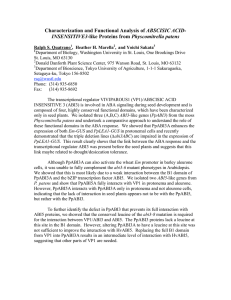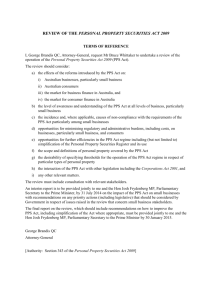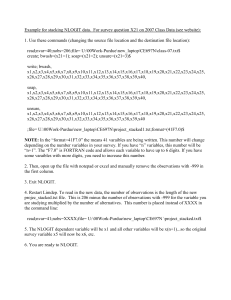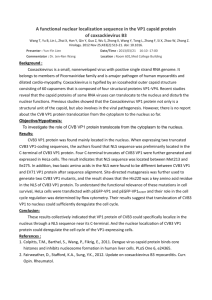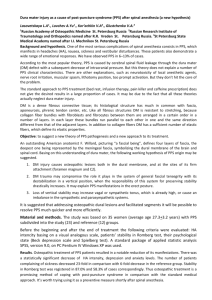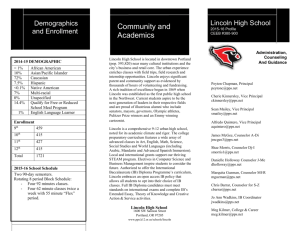Managerial Accounting Chapter 9
advertisement
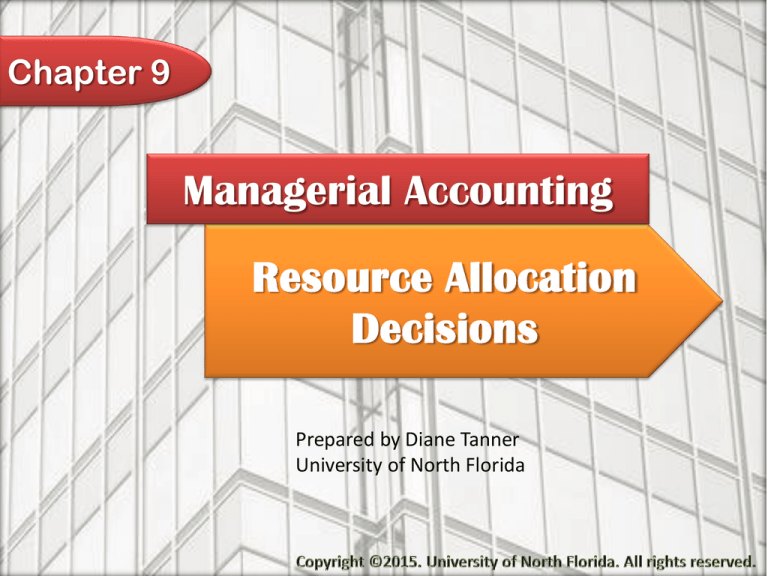
Chapter 9 Managerial Accounting Resource Allocation Decisions Prepared by Diane Tanner University of North Florida Production Constraints Constraints occur when the capacity to manufacture a product or provide a service is limited in some manner Examples Labor Skilled craftspeople Facilities Special machinery Limited factory space Materials Limited availability 2 Influence of Constraints Limited resources may cause management to focus on the constraint instead of the contribution margin per unit Goal Determine the most profitable allocation of resources i.e., which product will contribute the most to profit 3 4 Decisions When Resources are Limited If products are mutually exclusive Occurs when events do not occur at the same time i.e., a customer will buy one product instead of the other; does not insist that both be purchased If products are not mutually exclusive Occurs when customers insist on having more than one product available Limited Resource Decisions When Products are Mutually Exclusive How to select products to produce/sell Step 1: Determine contribution margin per unit per constrained resource of each product or service Step 2: Choose the product/service with the highest CM per constrained resource to produce; Produce zero of the other products 5 Limited Resource Decisions When Multiple Product Production Required How to select products to produce/sell Step 1: Determine contribution margin per unit per constrained resource Step 2: Choose the product/service with the lowest CM per constrained resource to produce the product with the minimum quantity required Step 3: Determine the resource used for the product with minimum units Step 4: Subtract the resource to be used for the product with minimum units from the total resource available Step 5: Allocate the remaining resource to the second product 6 Mutually Exclusive Allocation WatCo manufactures and sells two products. Customers will buy either product with no demand on other products. There are 1,200 machine hours available. X21 R45 Selling price $55 $88 Variable costs $30 $48 Machine hours 2.5 4.2 Step 1: Contribution margin per unit of limited resource X21: ($55 - $30) / 2.5 hours = $10 /machine hour R45: ($88 - $48) / 4.2 hours = $9.52 /machine hour Step 2: Produce only the product with the best use of the resource. Product X21: 1,200/2.5 = 480 units Product R45: 0 units 7 8 Non-Mutually Exclusive Allocation WatCo must produce a minimum of 100 of each product. There are 1,200 machine hours available. X21 R45 Selling price $55 $88 Variable costs $30 $48 Machine hours 2.5 4.2 Step 1: Contribution margin per unit of limited resource X21: ($55 - $30) / 2.5 hours = $10 /machine hour R45: ($88 - $48) / 4.2 hours = $9.52 /machine hour Step 2: Produce minimum units of the least profitable product Product R45: 100 units Usage = 100 * 4.2 = 420 hours Step 3: Use all remaining resources on the most profitable product. Remaining hours: 1,200 – 420 = 780 Product X21: = 780/2.5 = 312 units The End 9
![013—BD Global [DOC 117KB]](http://s3.studylib.net/store/data/005892885_1-a45a410358e3d741161b3db5a319267b-300x300.png)
